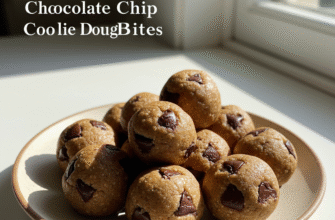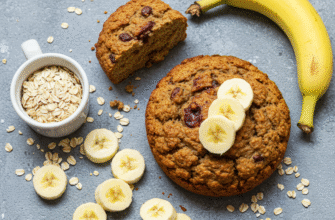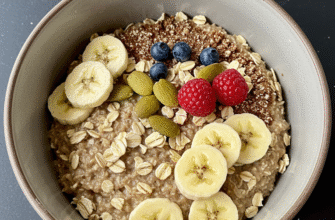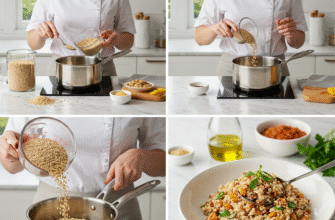When you hear the term ‘ancient grains’, your mind might jump to images of farro, spelt, or perhaps the ever-popular quinoa. These have certainly earned their place in the modern pantry. But there’s another contender, a robust and versatile food with deep historical roots that often gets overlooked: buckwheat. Despite its name, buckwheat isn’t actually a type of wheat, or even a true grain at all. It’s time to pull back the curtain on this fascinating food and explore why it deserves a spot on your plate.
Buckwheat belongs to a group of plants known as pseudocereals. These are seeds that are consumed in ways similar to cereal grains but don’t grow on grasses. Think quinoa and amaranth – buckwheat is in good company! Botanically speaking, it’s a fruit seed, more closely related to rhubarb and sorrel than to wheat or oats. This unique classification is the first clue to its distinct properties, most notably, being naturally gluten-free.
Unpacking the Appeal of Buckwheat
So, what makes buckwheat special beyond its interesting botanical identity? Its history stretches back thousands of years, cultivated across Asia and Eastern Europe long before finding its way to other parts of the world. This longevity speaks to its resilience as a crop and its value as a food source. It thrives in conditions where traditional grains might struggle, making it a historically significant staple.
A Nutritional Powerhouse (Without the Hype)
Buckwheat brings a solid nutritional profile to the table. It’s particularly well-regarded for its protein content, which includes a good range of amino acids, making it a valuable component of plant-focused diets. It’s also a noteworthy source of dietary fiber, which plays a role in digestive wellness and can contribute to a feeling of fullness after meals. Beyond protein and fiber, buckwheat offers essential minerals like magnesium and manganese. Magnesium is involved in hundreds of processes in the body, including muscle and nerve function, while manganese contributes to bone health and metabolism. Incorporating buckwheat is simply a tasty way to add these important nutrients to your meals.
Did you know? Buckwheat’s status as a pseudocereal means it’s unrelated to wheat. This makes it an excellent, naturally gluten-free option for individuals managing celiac disease or gluten sensitivities. Always ensure products are certified gluten-free if cross-contamination is a major concern for you.
Naturally Free From Gluten
The fact that buckwheat is inherently gluten-free is a massive plus for many people. Whether you avoid gluten for medical reasons or by choice, buckwheat opens up a world of culinary possibilities. It allows for the creation of satisfying porridges, pancakes, noodles, and side dishes without relying on processed gluten-free alternatives, offering whole-food goodness instead. This makes it an incredibly useful ingredient for anyone navigating a gluten-free lifestyle or simply looking to diversify their grain (and pseudocereal!) intake.
A Unique, Earthy Flavor
Buckwheat possesses a distinct flavor profile that sets it apart. It’s often described as earthy, nutty, and slightly robust. Toasting the groats, which results in ‘kasha’, intensifies this flavor, adding a deeper, more complex dimension. This unique taste pairs wonderfully with mushrooms, root vegetables, savory herbs, and even richer flavors like roasted meats or sturdy cheeses. It can stand up to strong companions but is also subtle enough to blend into sweeter preparations like pancakes or porridge when balanced with fruit or spices.
Getting Buckwheat into Your Kitchen Routine
Intrigued? Bringing buckwheat into your meals is easier than you might think. It comes in several forms, each suited to different culinary applications.
Know Your Buckwheat: Forms and Uses
Raw Buckwheat Groats: These are the whole, hulled seeds. They have a milder flavor than kasha and cook up into a softer texture, ideal for porridge or adding to granola. They often have a slightly greenish hue.
Kasha (Toasted Buckwheat Groats): These groats have been roasted, giving them a darker brown color and that signature nutty, earthy flavor. Kasha cooks faster than raw groats and tends to hold its shape better, making it perfect as a side dish alternative to rice or couscous, or as a base for savory pilafs.
Buckwheat Flour: Ground from buckwheat groats, this flour is famously used to make Japanese soba noodles and traditional European pancakes (like Russian blini or French galettes). It has a distinctive greyish color and hearty flavor. It works well in quick breads, muffins, and cookies, often blended with other flours for lighter results, especially in yeast-based recipes, as it contains no gluten to provide structure.
Buckwheat Grits/Cream of Buckwheat: These are more coarsely ground groats, cooking up into a creamy hot cereal similar to grits or cream of wheat, but with buckwheat’s unique flavor and nutritional benefits.
Buckwheat Flakes: Similar to rolled oats, these can be used for quick-cooking porridge or added to baked goods and homemade granola bars.
Simple Ways to Start Cooking with Buckwheat
- Breakfast Boost: Cook raw groats or grits into a warm breakfast porridge. Top with fruit, nuts, seeds, and a drizzle of maple syrup or honey.
- Side Dish Swap: Prepare kasha according to package directions (usually simmering in broth or water, about 1 part kasha to 2 parts liquid, for 15-20 minutes) and serve it instead of rice or quinoa alongside stews, curries, or roasted vegetables.
- Soup & Salad Addition: Add cooked kasha or raw groats to hearty soups and stews for extra texture and substance. Sprinkle toasted groats over salads for a nutty crunch.
- Pancake Power: Experiment with buckwheat flour for weekend pancakes or crepes. Its robust flavor pairs beautifully with both sweet and savory fillings. Start by substituting a portion (like 25-50%) of the regular flour in your favorite recipe.
- Baking Adventures: Incorporate buckwheat flour into muffins, quick breads, or scones for added flavor and nutrients. Remember it’s gluten-free, so it works best in recipes that don’t rely heavily on gluten for structure, or when combined with other flours.
A Timeless Choice for Modern Meals
Buckwheat is more than just a gluten-free alternative; it’s a flavorful, nutrient-contributing food with a rich history. Its versatility in the kitchen, from comforting morning porridge to savory side dishes and unique baked goods, makes it an exciting ingredient to explore. As a pseudocereal, it offers a different nutritional profile than traditional grains, contributing fiber, minerals, and quality plant-based protein to your diet.
A Note on Preparation: Rinsing buckwheat groats (both raw and toasted) before cooking is generally recommended. This helps remove any dust or debris. For fluffier, separated grains when making kasha as a side dish, some cooks recommend coating the dry groats in a beaten egg and toasting them briefly in a dry pan before adding liquid.
Adding buckwheat to your diet isn’t about chasing trends; it’s about rediscovering a resilient, nourishing food that has sustained populations for centuries. It’s about adding variety, flavor, and valuable nutrients to your meals in a simple, satisfying way. Give buckwheat a try – this ancient seed might just become a modern favorite in your kitchen.








